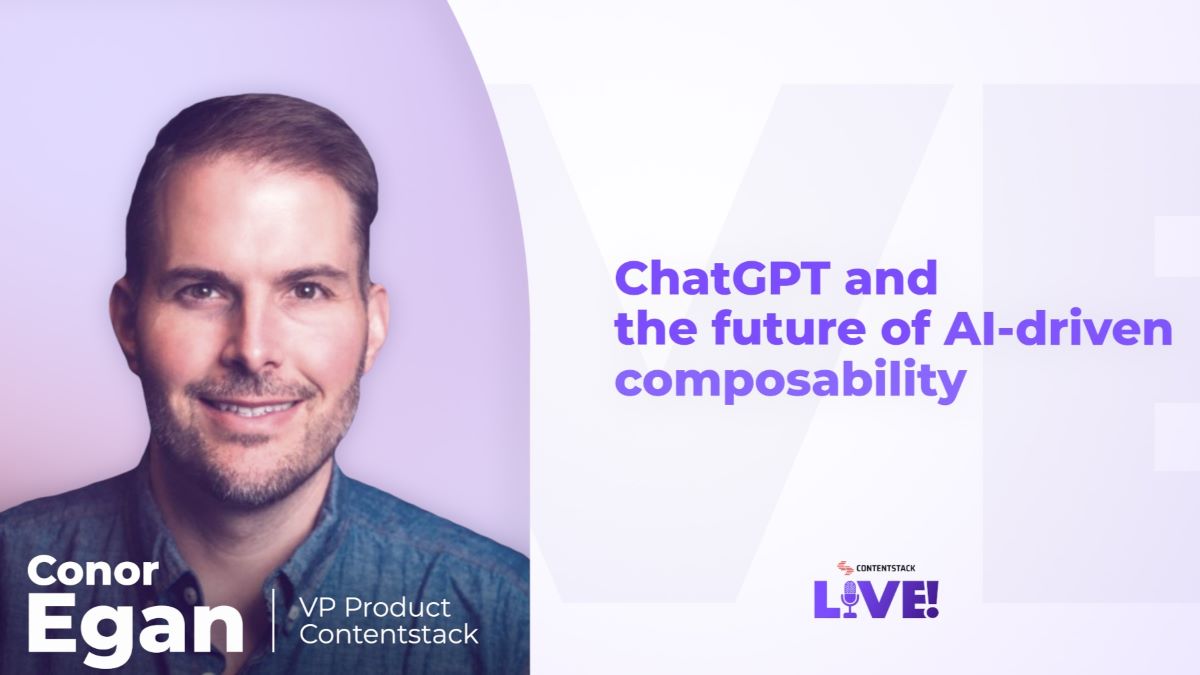Watch ‘Contentstack LIVE!’ for latest in composable tech

Are you looking for ways to maximize your business outcomes through composable technology? Join us every Friday for our new webinar series, “Contentstack LIVE!” to explore the latest in composable tech strategies, innovative practices and insights from industry leaders.
In our first episode, Contentstack VP of Product Conor Egan joins hosts Jeff Baher and Austen Chen to talk about the power of generative AI and how Contentstack’s AI Assistant leverages ChatGPT in a composable digital experience platform. Their 19-minute conversation covers:
- How generative AI works, its uses and limitations
- How content editors can use a ChatGPT integration
- What’s on the horizon for AI technology and composable DXPs
This week, Contentstack CMO Susan Beermann joins Jeff and Austin to talk about digital-first marketing. Tune in to catch Beermann’s expert take on:
- The critical ingredients for going digital-first
- Advice she gives to her peers about going composable
- Marketing technology trends she’s most excited about
Visit our website to watch these episodes of “Contentstack LIVE!” and see new episodes every Friday. Join the Contentstack LIVE community to connect with Jeff, our guests and the rest of the Contentstack community. Schedule a free demo to talk to an expert about how going composable can help you reach your business goals.
About Contentstack
The Contentstack team comprises highly skilled professionals specializing in product marketing, customer acquisition and retention, and digital marketing strategy. With extensive experience holding senior positions at renowned technology companies across Fortune 500, mid-size, and start-up sectors, our team offers impactful solutions based on diverse backgrounds and extensive industry knowledge.
Contentstack is on a mission to deliver the world’s best digital experiences through a fusion of cutting-edge content management, customer data, personalization, and AI technology. Iconic brands, such as AirFrance KLM, ASICS, Burberry, Mattel, Mitsubishi, and Walmart, depend on the platform to rise above the noise in today's crowded digital markets and gain their competitive edge.
In January 2025, Contentstack proudly secured its first-ever position as a Visionary in the 2025 Gartner® Magic Quadrant™ for Digital Experience Platforms (DXP). Further solidifying its prominent standing, Contentstack was recognized as a Leader in the Forrester Research, Inc. March 2025 report, “The Forrester Wave™: Content Management Systems (CMS), Q1 2025.” Contentstack was the only pure headless provider named as a Leader in the report, which evaluated 13 top CMS providers on 19 criteria for current offering and strategy.
Follow Contentstack on LinkedIn.







.svg?format=pjpg&auto=webp)
.svg?format=pjpg&auto=webp)
.png?format=pjpg&auto=webp)






.png?format=pjpg&auto=webp)


